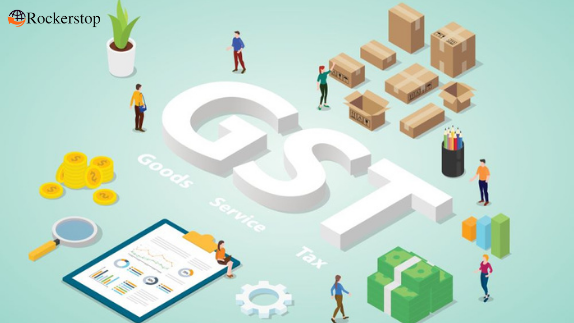How GST Help in Your Business –
Taxes are often considered an unwelcome but unavoidable part of the freelancer’s life. The Goods and Services Tax (GST) registration for freelancers in India especially is taken into account optional, with many freelancers ignoring GST registration once they don’t cross the mixture turnover threshold of Rs. 20 lakhs in a financial year. However, GST registration is basically simple, and therefore the process has been made user-friendly to profit small-scale entrepreneurs and businessmen. At the end of the day, it can actually benefit your business.
Freelancers from India are selling their services with a turnover of above Rs. 20 lakhs yearly must register for GST. Those with a turnover of less than Rs. 20 lakhs and who offers services only within their state are exempt from GST. The law may be a bit different for freelancers within the northeastern states of Uttarakhand, Jammu and Kashmir, and Himachal Pradesh. There, you would like a turnover of but Rs. 10 lakhs yearly and must offer services only within your state to qualify for a GST exemption.
For one, it pushes the unorganised sector to become mainstream, giving them access to a bigger number of clients. Several small-scale entrepreneurs aver to the very fact that applying for GST actually pushed them to explore territories they’ll not otherwise have ventured into like e-commerce. Freelancers India can gain profit by lending projects from overseas clients and selling their goods via online channels.
Regardless of your turnover, if you offer freelance services in India across state boundaries, the govt. requires you to register for GST. For example, if you’re a field researcher based in Maharashtra and you provide services to a client in Tamil Nadu, you’ve got to register for GST, albeit you’re just stepping out and your yearly turnover is fairly low.
There’s also no GST concession for Indian freelancers who run their businesses completely online. So, as an example, if you’re a contract software programmer, writer, blogger or social media strategist, you’re required to register for GST.
Here’s a fast check out the varied sorts of GST and once they would be applied:
1. CGST or Central Goods and Service Tax –
CGST is enforced upon intra-state supplies by the Central Government for both goods and services. The SGST is additionally levied on an equivalent intra-state supply but is governed by the government. Both governments have an agreement on splitting the revenue between them.
2. SGST or State Goods Service Tax and UTGST or Union Territory Goods and repair Tax –
Depending on whether you’re registered from a state or a Union Territory, SGST or UGST would be charged alongside CGST. Ensure that you’re not levied both SGST and UTGST on an invoice.
How this would work:
Assume that Yash may be a website designer in Chennai selling his service to a corporation based in Chennai. The whole value of his service amounts to Rs. 2,00,000. The GST rate of 18% would come with CGST of 9% and SGST of 9%. So, Yash would collect an additional Rs. 36,000 from the client. Of this, Rs. 18,000 would attend the Central Government and Rs. 18,000 would go to the Tamil nadu Government.
3. IGST or Integrated Goods and Service Tax –
IGST would be levied on Import or Inter-State supply of products or services or both. The IGST is like the sum of CGST and SGST/UTGST. It is also applicable on cases important into India and export from India.
In the example above, if Yash from Chennai were to supply his services to a corporation based in Maharashtra, he would charge 18% IGST and therefore the amount would attend the Central Government.
Tips to remember before Filing for GST :
1. Filing for GST is really simple and can be done online on GST.gov.in
2. The extra amount is borne by the client and not by the service provider/freelancer.
3. You need to file a total of 37 returns– three monthly returns and one annual return.
4. If you cross the threshold amount but do not register and collect GST, you can be tracked on the basis of your TDS.
5. GST Payment has to be done before the 20th of the next month in the case of taxable supplies.
6. Under GST, a registered dealer has to file GST returns that include: Purchases, Sales, Output GST (On sales), Input tax credit (GST paid on purchases).
7. To file GST returns, GST compliant sales and buy invoices are required.
The good news is that under GST, you’ll claim input decrease on certain goods and services you employ for your business. For example, if you purchase a laptop and tablet and buy internet service, you’ll claim the GST paid on these as a credit. The credit created from your claim goes toward your GST accountability, lowering it.
There’re tons to find out when it involves GST. The good news is that, when it involves learning this new way of paying taxes, all business people in India are within the same boat. Once you learn the ropes, complying with GST is going to be as easy as opening your online accounting software and making a couple of clicks.
